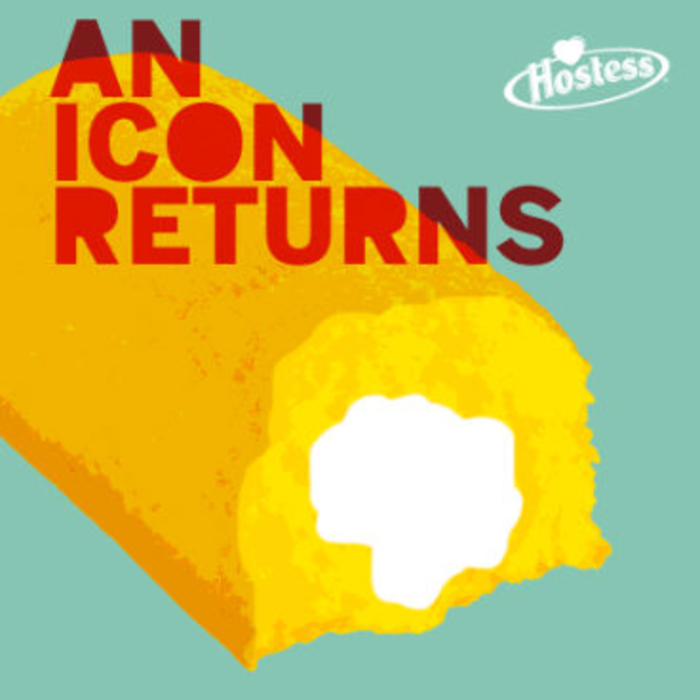November marked dark days for Twinkie lovers. While many were buying their turkeys and cranberry sauce, others were mourning Hostess’ liquidation, the second in less than a decade for the wholesale bake and distributor, and the death of Zingers, HoHos, and DingDongs.
“When the products started leaving shelves, there was an incredible outpouring of emotion from consumers… [and] people who frankly couldn’t fathom a world without Hostess snack cakes,” says Hannah Arnold, principal of LAK public relations, Hostess’s public relations agency of record.
However, Hostess—and the Twinkie along with it—began its rebirth last March when Metropoulos & Co. and Apollo Global Management LLC purchased the company for $410 million. To celebrate the brand’s resurrection, Hostess launched the multimillion-dollar, integrated “Sweetest Comeback in the History of Ever” campaign.
“Unfortunately, the brand had to go away for it to come back with a better life,” says Dave Lubeck, EVP and executive director of client services for Hostess’s advertising agency of record Bernstein-Rein Advertising. “At the same time, it’s one that’s going to make a healthier brand than it ever was before.”
The rebirth of the brand signifies the dawn of a new audience. In addition to targeting its brand loyalists, Hostess is leveraging the campaign to target moms and 18- to 35-year-old males who shop at convenient stores. Additionally, Arnold says that Hostess has implemented a new distribution system that allows bakeries to ship the products directly to the retail customers’ warehouses instead of to individual stores; thus expanding Hostess’s reach to convenience stores.
Lubeck adds that the campaign’s “Sweetest Comeback in the History of Ever” message speaks to both target audiences.
“We knew we had our loyal fans as long as we were true to them. But to really be the business and the brand that we wanted to be, we needed to reach beyond that,” Lubeck says. “If we talked in the language of the younger male, we would also appeal to moms because moms are really trying to talk like their kids. They want to communicate in the way their kids do to their kids.”
To build up the anticipation for Hostess’ July 15 return to shelves, the campaign kicked off with a June 24 prelaunch. In addition to hanging wallscapes in major cities, including New York and Los Angeles, Hostess launched a “Prepare Your CakeFace” initiative in which street teams handed out “Prepare Your CakeFace” T-shirts and encouraged Twinkie fanatics to upload their “CakeFaces” to Instagram and Vine. This initiative shifted to “Feed Your CakeFace”—featuring fans eating the 135-calorie Twinkie—when the prelaunch ended and the campaign officially began July 15. According to Lubeck, more than 1,015 videos have been uploaded so far. Fans can also visit Hostess’ interactive “Snack Spotting” map to see where consumers have tweeted their face-stuffings and where they can buy more treats.
Hostess also posted timely, relevant content via its social channels to portray itself as a “pop-culture” type of product. For example, on the day the Duke and Duchess of Cambridge’s baby was born, Hostess posted a picture of a man cradling a giant Twinkie on its Facebook and Twitter pages with the words “This summer, a precious little bundle of sweetness was born. And Will and Kate also had their baby.” The picture made headlines and was featured on Good Morning America, Mashable, and ABC News. Lubeck acknowledges that had the brand posted the picture a day later, it wouldn’t have received the same attention.
“We have to be agile, and we have to be constant,” he says.
Within days of Hostess products returning to shelves, sales were seven times greater than previous records, and orders were three to six times greater than production capacity. Hostess had forecast that more than 50 million Twinkies and more than 35 million Cupcakes would hit store shelves during the first two weeks of the launch, Arnold says. She also notes that retail customers have already ordered an additional 100 million units.
However, if the brand wants to continue to succeed it will have to continue to find new ways to engage its brand advocates.
“This isn’t something that you can just do some paid advertising for,” Lubeck says. “People have to grab onto this, believe in it, be a part of it, and want to participate in it.”








